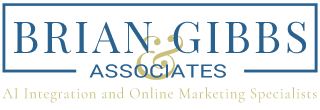What Are the Parts of Digital Marketing? Cracking the Code
Familiar with the power of digital marketing? But do you know how to make it work? This article will give you insight into the components of digital marketing. Discover how to best use its potential! Dive into the digital marketing world and uncover all its secrets!
Diving into Digital Marketing: A Simplified Explanation

Digital marketing is a complex field that helps businesses grow.
Digital marketing is a complex field that helps businesses grow. To understand it, we must look at its components. SEO is a key element. Optimizing websites and content, using keywords, and creating backlinks can help companies rank higher in search engine results pages.
Social media marketing is also vital. Millions of people use these platforms, so companies can use them to reach their target audience through ads, content, and influencer partnerships. Email marketing is an essential part of digital marketing too. Businesses can collect customer emails and send personalized campaigns to nurture and convert leads.
Content marketing is another important part of digital strategy. Creating relevant content helps attract and keep customers. Blogs, videos, infographics, and ebooks are great for this. Lastly, analytics allow companies to track metrics like website traffic, conversions, and customer engagement, so they can optimize their campaigns.
Pro Tip: To succeed in digital marketing, stay up-to-date with trends and best practices. The digital landscape is constantly changing, so ongoing learning is essential. Unlock the power of the internet and dominate the virtual battlefield with the right strategies!
The Digital Edge: Unleashing the Significance of Marketing Online

Having a solid online presence is a must for businesses to stay competitive.
Digital marketing is essential in today’s digital age. With technology’s ever-growing importance, it has become a powerful tool for businesses to reach their target audience and achieve their goals.
Having a solid online presence is a must for businesses to stay competitive. It involves various strategies and techniques, like SEO and social media marketing, to improve visibility and attract customers.
SEO involves optimizing a website’s content and structure to rank higher on search engine result pages. Social media marketing is leveraging platforms like Facebook, Instagram, and Twitter to engage with audiences and promote products or services.
Email marketing is another component that enables direct communication with customers through personalized emails. Content marketing is creating valuable content to establish a brand’s authority and credibility. Digital advertising is placing ads on platforms to drive traffic to a website or landing page. And data analysis is measuring the success of campaigns.
Don’t miss out! Embrace the digital edge and take advantage of the opportunities online marketing provides. Stay ahead of the competition by implementing a well-rounded digital marketing strategy to drive results and boost success. Or else, you’ll be like a dinosaur with a smartphone, lost in the present!
Embrace the Future: Why Digital Marketing Is Your Ultimate Strategy

Digital marketing provides many ways to engage customers and drive conversions.
Today’s digital landscape is ever-evolving. Embrace the future with digital marketing as your ultimate strategy. Reaching your target audience with precision and efficiency is now possible.
Digital marketing offers many avenues for engaging customers and driving conversions. SEO can help boost online visibility. Social media platforms let you connect with consumers on a personal level. Email marketing allows businesses to nurture relationships with existing customers. Content marketing builds trust in the industry by providing valuable content.
Digital marketing has its roots in traditional methods. Businesses have adapted to meet consumer demands in the digital realm.
Acknowledge the importance of digital marketing to stay ahead. Unlock new opportunities and foster meaningful connections. Seize the potential of digital marketing now – craft the perfect storm and make waves in the ocean of online marketing!
Strategic Digital Outreach: Your Guide to Crafting Impact
Strategic Digital Outreach is imperative to succeed in digital marketing. Let’s explore its core components:
| Component | Description |
|---|---|
| SEO | Optimizing websites and content with keywords and backlinks for better search engine ranking. |
| Social Media Marketing | Using platforms like Facebook, Instagram, and Twitter for ads, content, and influencer partnerships. |
| Email Marketing | Collecting customer emails and sending personalized campaigns to nurture and convert leads. |
| Content Marketing | Creating valuable content such as blogs, videos, infographics, and ebooks to attract and engage customers. |
| Analytics | Tracking metrics like website traffic, conversions, and customer engagement to optimize campaigns. |
To maximize results, an ongoing analysis and optimization of data-driven insights is necessary.
Another factor to consider is the value of personalization in strategic digital outreach. Customizing content and messaging to individual preferences can increase engagement and conversion rates.
This is exemplified in the story of a startup that used targeted social media ads and storytelling techniques. It resulted in a huge surge of customers and made them an industry leader in a year.
Comprehend the complexity of strategic digital outreach and use its components to create an effective digital marketing campaign that bears fruit.
Thriving in the Digital Age: Dynamic Approaches to Online Marketing

By optimizing websites and content, businesses can appear higher in search engines.
Businesses must accept digital marketing to succeed in today’s world. The internet offers immense possibilities, so companies must update their strategies to stay ahead.
One part of digital marketing is SEO. By optimizing websites and content, businesses can appear higher in search engines. This means researching keywords, producing quality content, and securing backlinks for organic traffic.
- Social media is also valuable. Platforms like Facebook, Twitter, and Instagram let companies reach a wide audience. Ads and content help build brand awareness and drive visitors to websites.
- Email marketing is still useful. By sending personal emails to subscribers, companies can nurture leads and convert them into customers. Important content and promotions should be tailored to the target audience.
- Influencer marketing is beneficial too. Working with influencers who are popular in the industry can help promote the brand and create strong endorsements. Brands must align with influencers’ values and target demographics for the best effect.
- Data analytics is also essential. Monitoring website traffic, conversion rates, bounce rates, and engagement levels gives valuable info on what works and what needs improving.
Building Digital Success: Deconstructing the Components of Marketing Online
Digital marketing is complex and multifaceted. To make it work for your business, you need to deconstruct and understand its components. Here’s a table outlining the key elements:
| Component | Description |
|---|---|
| SEO | Optimize websites to improve search engine rankings |
| Content Marketing | Create and distribute content to attract and engage audiences |
| Social Media Marketing | Use social platforms to promote brands and engage with customers |
| PPC | Run targeted ads and pay only when users click on them |
| Email Marketing | Send personalized emails to nurture leads and build relationships |
| Analytics | Collect and analyze data to measure digital marketing performance |
Each component has its own intricacies. For example, SEO includes keyword research, on-page optimization, link building, and technical SEO. Content marketing goes beyond blog posts to include videos, infographics, podcasts, and more.
Let me share a story about the power of digital marketing. A small bakery in a busy city was unable to attract customers, despite having delicious treats. However, with a comprehensive digital marketing strategy including SEO optimization, engaging social media campaigns, and effective email newsletters, it experienced a significant increase in footfall within a few months.
This example shows how understanding and intelligently utilizing digital marketing components can help businesses achieve their goals in today’s digital landscape.
Beyond the Screen: Discovering the Many Facets of Digital Marketing
The digital landscape offers various facets of digital marketing that go beyond the screen. To understand these better, let’s look at a table:
| Facet | Description |
|---|---|
| SEO | Improving website visibility in search engine results with targeted keywords and content optimization. |
| Social Media Marketing | Applying social platforms to engage with people, build brand recognition, and drive website traffic. |
| Content Marketing | Crafting valuable and applicable material to draw and keep a predetermined audience, eventually leading to profitable customer action. |
| Email Marketing | Establishing relationships with potential customers or nurturing existing ones through personalized email campaigns. |
| PPC Advertising | Directing web traffic by paying for advertisements on search engine result pages based on certain keywords. |
| Affiliate Marketing | Collaborating with affiliates who advertise products or services in exchange for a commission on successful referrals. |
| Influencer Marketing | Joining with influencers in special industries or niches to reach their committed audiences effectively. |
| Online Reputation Management | Monitoring and managing online representatives by actively dealing with customer feedback, reviews, and social media comments. |
Also, each facet of digital marketing helps the others. For instance, with SEO, it’s easier for search engines to locate your content and drive organic traffic. And, this can be strengthened by an effective social media presence.
To maximize the power of these facets, consider these tips:
- Have a comprehensive content plan: By organizing your content creation process and matching it with your business goals, you can guarantee consistency across all channels.
- Embrace data-driven decision-making: Use analytics tools to track key metrics like website traffic sources, engagement rates, conversion rates, and customer demographics. This data will guide your marketing efforts and make it possible for you to make informed decisions.
- Stay updated with industry trends: The digital landscape is always changing. By tracking emerging technologies, platforms, and consumer behaviors, you can modify your strategies to stay ahead.
- Build meaningful connections: Interact with your audience through personalized and interactive campaigns. Invite user-generated content, answer customer inquiries quickly, and create a devoted community around your brand.
By following these suggestions, you can use digital marketing to increase brand visibility, attract and hold customers, and eventually drive business growth. Embrace the multifaceted nature of digital marketing and explore the endless possibilities beyond the screen. With a thorough digital marketing plan, you’ll be like an architect constructing success, one click at a time.
Charting Success: Architecting a Comprehensive Digital Marketing Plan

Crafting a comprehensive digital marketing plan is crucial for success in today’s competitive online world.
Crafting a comprehensive digital marketing plan is crucial for success in today’s competitive online world. Strategically charting your path will help ensure that your efforts are aligned with your business goals.
To aid you in crafting a comprehensive digital marketing plan, here are key components to consider:
- Identify your target audience: Knowing the demographics, interests, and behaviors of your target audience is essential for successful digital marketing. This will guide your choice of platforms, content, and messaging.
- Set clear objectives: Define particular goals that align with your business objectives. Whether it’s increasing brand awareness, driving website traffic, or generating leads, having clear objectives helps measure the success of your digital marketing efforts.
- Choose the right channels: Selecting the right digital marketing channels is critical to reaching and connecting with your target audience. Think about the demographics of the platform users, their preferences, and the nature of your product or service.
- Develop engaging content: Creating compelling and relevant content is key to capturing and keeping audience attention. Use various formats like blog posts, videos, infographics, and social media posts to effectively communicate your brand message.
- Implement SEO strategies: Search engine optimization (SEO) techniques enhance the visibility of your website in search engine results pages. Include relevant keywords, optimize meta tags, create quality backlinks, and ensure a user-friendly website experience.
- Leverage social media: Social media platforms give you the chance to relate to consumers on a personal level while promoting brand awareness. Regularly post engaging content on relevant channels to build a faithful following and encourage interaction.
- Monitor analytics: Tracking key performance indicators (KPIs) assists in evaluating the effectiveness of your digital marketing efforts. Analyze data related to website traffic, conversions, engagement rates, social media metrics, and adjust strategies accordingly.
By following these suggestions, you can craft a comprehensive digital marketing plan that aligns with your business goals. Remember to regularly review and adjust your strategies due to the ever-changing digital landscape to remain competitive and achieve long-term success.
Cycle of Influence: Harnessing Audience Engagement with Life Cycle Marketing

A conductor orchestrating a symphony of customer interactions
Life cycle marketing is a strong tactic that helps businesses to interact with their audience at every step of the customer journey. By understanding the distinct stages of the customer’s lifetime, businesses can customize their marketing efforts to successfully catch and keep customers. Let’s have a closer look at the several components of life cycle marketing.
- The first stage is acquisition. Here, businesses try to draw in new customers to their products or services. This includes raising awareness through various channels such as social media ads, content marketing, and search engine optimization. The aim is to generate interest and motivate potential customers to take action.
- Next, is the conversion stage. Here, companies focus on transforming leads into paying customers by guiding them toward a purchase. This could involve personalized email campaigns, targeted offers, and incentives that inspire customers to finish their buying process.
- Then comes the retention stage. Here, businesses work on maintaining connections with existing customers. This involves providing great customer service, personalized communication, and loyalty programs to keep customers involved and content. By forming strong ties with their audience, businesses can raise customer loyalty and encourage repeat business.
- The fourth stage in the life cycle marketing process is upselling or cross-selling. After a customer has bought, companies can use this chance to offer extra products or upgrades that match their initial purchase. This not only increases income but also boosts the overall customer experience.
- Finally, we have the advocacy stage. Here, satisfied customers become advocates for the brand. Through positive word-of-mouth referrals and online reviews, these advocates help bring in new prospects and extend the company’s reach.
Understanding and utilizing life cycle marketing can have a major effect on a company’s success in today’s digital world. By harnessing audience engagement throughout each step of the customer journey, businesses can create meaningful connections with their target market and encourage long-term growth.
Shaping Tomorrow: The Ever-Evolving Landscape of Digital Marketing

Develop a digital marketing roadmap.
Digital marketing is a quick-changing scene that constantly shifts and develops to satisfy the needs of the future. It has multiple elements which collaborate to make successful online strategies. From SEO to social media ads, email campaigns to content marketing – the ever-evolving nature of digital marketing needs constant invention and modification. As tech progresses and customer behavior transforms, marketers must be ahead of the game to shape tomorrow’s strategies properly.
In this dynamic digital marketing world, staying current with the newest trends and techniques is essential. SEO is fundamental for optimizing sites for search engines, raising visibility, and bringing in organic traffic. Social media sites became powerful advertising tools, giving businesses a chance to hit their target audience with accuracy. Email campaigns keep being a powerful way to build relationships with customers. Content marketing has grown in importance because it allows firms to confirm their authority and create trust between themselves and their customers.
While these components are the core of digital marketing, there are other unique details that influence its ever-shifting landscape. Influencer marketing has emerged as a valuable tactic, exploiting the fame and credibility of influential individuals in certain niches. Data analytics provides marketers with insights into consumer behavior, helping them to make decisions based on facts that bring better outcomes. Mobile optimization has become necessary since more people access the internet through their phones.
Pro Tip: To keep up with the fast-moving digital marketing, invest time regularly to learn new skills and stay informed about industry trends. Embrace experimentation and creativity while having your target audience in mind in all your strategies.
To Wrap It All Up…
In the dynamic world of digital marketing, understanding its components is key. From SEO to social media, email campaigns to content creation, each element plays a crucial role in engaging and converting audiences. To succeed, marketers must embrace ongoing learning, creativity, and adaptability. By doing so, they can navigate the ever-evolving digital landscape and establish a lasting presence in the virtual realm.
Frequently Asked Questions
What are the parts of digital marketing?
A: The parts of digital marketing include search engine optimization (SEO), social media marketing, content marketing, email marketing, pay-per-click (PPC) advertising, and analytics.
What is search engine optimization (SEO)?
A: SEO is the practice of optimizing a website to improve its visibility and ranking on search engine results pages. It involves techniques like keyword research, on-page optimization, and link building.
What is social media marketing?
A: Social media marketing involves using social media platforms like Facebook, Instagram, Twitter, and LinkedIn to promote products or services. It includes creating engaging content, interacting with followers, and running targeted ad campaigns.
What is content marketing?
A: Content marketing is the process of creating and sharing valuable content to attract and engage a specific target audience. It can include blog posts, videos, infographics, and ebooks.
What is email marketing?
A: Email marketing is the practice of sending targeted emails to a group of subscribers to promote products, services, or events. It often involves personalized and automated email campaigns.
What is pay-per-click (PPC) advertising?
A: PPC advertising is a model where advertisers pay a fee each time their ad is clicked. It allows businesses to display ads on search engines or social media platforms and drive traffic to their websites.

